Most people have heard the stereotype that the Netherlands is a land filled with cheese — and it’s not entirely wrong.
Dutch cheese is famous and delicious, and between:
- 🥛 pasteurised to unpasteurised milk
- 🧀 slices to wheels
- ⏰ ageing times from just a few weeks to years
- 👌 and who knows how many flavour profiles
there is so much to consider when picking a Dutch cheese to eat!
If you have ever found yourself wondering what cheese you’re eating or which cheese is which, this is your complete guide to Dutch cheese varieties. 🧀
Goudse kaas: the Dutch staple (Gouda)
Ah yes, the classic Dutch cheese — and no, it doesn’t refer to “golden” cheese (although if you love cheese as much as we do, you probably think it’s a sort of gold).
You probably know Goudse kaas by its English name: Gouda. This particular cheese comes from the city of the same name in South Holland.
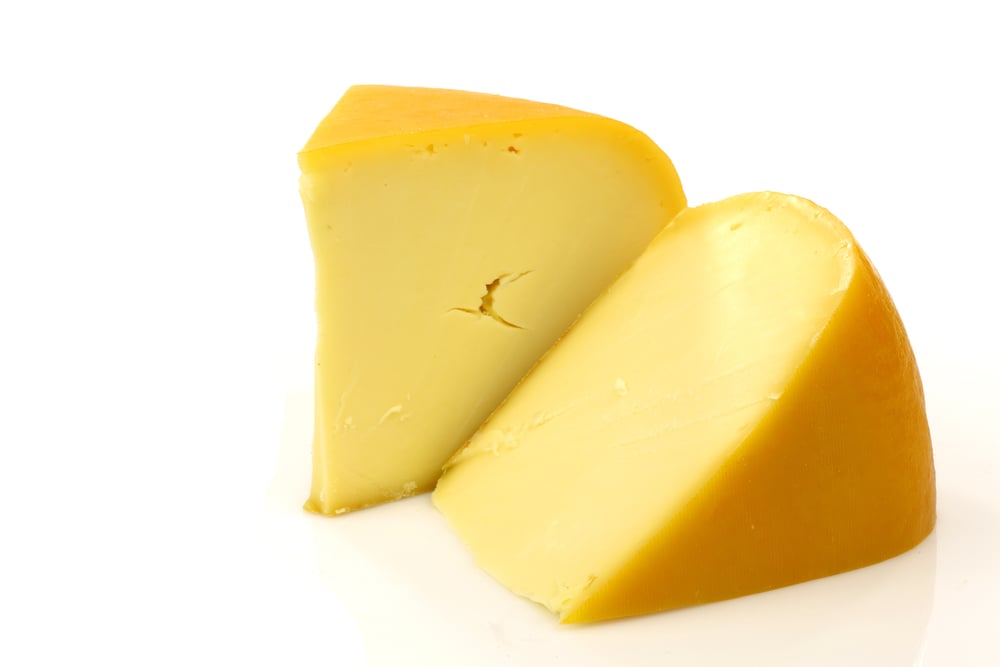
Gouda has a mild, nutty, and almost tangy flavour with a fudgy texture. The cheese pairs great with dessert wines and fruits, but it’s also the standard cheese for a boterham (sandwich).
Historically, farmers and merchants traded the cheese in this region, but now, it’s the catch-all phrase for Dutch cheese varieties made in a similar style.
Fun fact: this cheese was (and still is) so good French soldiers would steal it from Dutch farmers in the 19th century.
🛒 Where to buy: All Dutch supermarkets, cheese shops, Gouda cheese market
🥛 Pasteurised: Often, but can be made with unpasteurised milk
🧀 Texture: Semi-hard to hard
⌚️ Aging time: One month to three years
Beemster: cheese from below sea level
This cheese combines two undeniably Dutch things: the iconic dairy product and almost being underwater.
Beemster kaas has a similar production style to Gouda, but the difference is in the milk. Specifically, beemster cheese is made from milk from cows who eat grass grown on a sea-clay polder four meters below sea level. 🐮 Fancy, right?
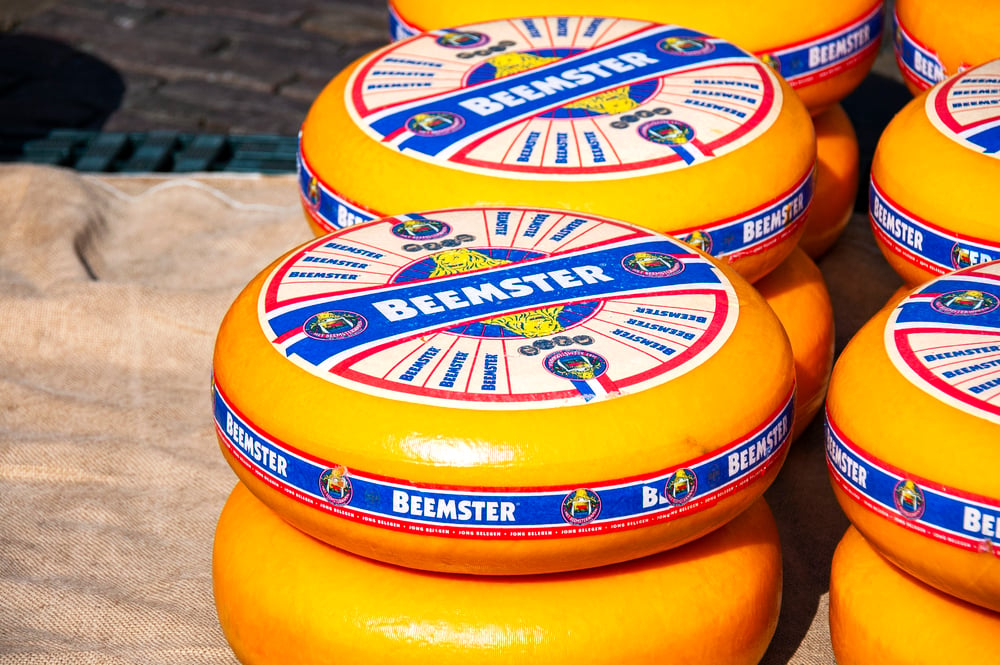
Because of the cows’ special diet, the cheese made from that milk has a unique flavour. The cheese has a particularly sharp, salty flavour because of its extensive ageing times. Talk about artisanal!
You could slice beemster for a sandwich, cube it for crackers or by themselves, and it pairs nicely with ports and red wines.
🛒 Where to buy: All Dutch supermarkets, cheese shops
🥛 Pasteurised: Yes
🧀 Texture: Hard
⌚️ Aging time: Two months to two years
Edam: the internationally-beloved cheese
Named after the Dutch town north of Amsterdam, Edam cheese is known for its international reach. It ages well and doesn’t spoil, making it the perfect cheese to pack up and send all over the world.
And it’s not just the Dutch who love Edam cheese. From Indonesia and Belize to the Philippines and Scandinavia, people from all over the world serve Edam during parties, celebrations, or simply for an afternoon bite!
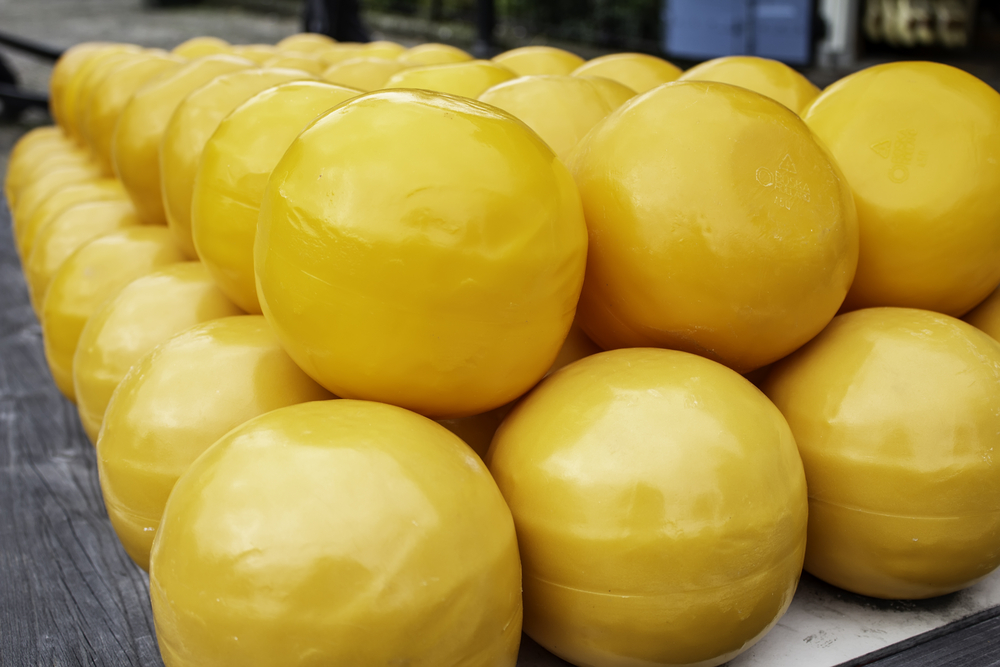
This Dutch cheese has earned its spot on the dining table in many countries. 🤗
Edam has a smooth texture and a nutty, salty flavour that gets sharper as it ages. Edam pairs particularly well with dark beers, making it a perfect match for a borrel snack.
🛒 Where to buy: Cheese shops, Edam cheese market, most Dutch supermarkets
🥛 Pasteurised: Yes
🧀 Texture: Semi-hard
⌚️ Aging time: Four weeks to 10 months
Boerenkaas: cheese straight from the farmhouse
Boerenkaas translates to “farmer’s cheese” — because it’s straight from the farm! 🧑🌾 Only Dutch cheese produced on a cheese farm with traditional and controlled methods can be sold as boerenkaas.
This Dutch cheese is special because farmers often make it with milk from other farm animals, including goats, sheep, and even buffalos!
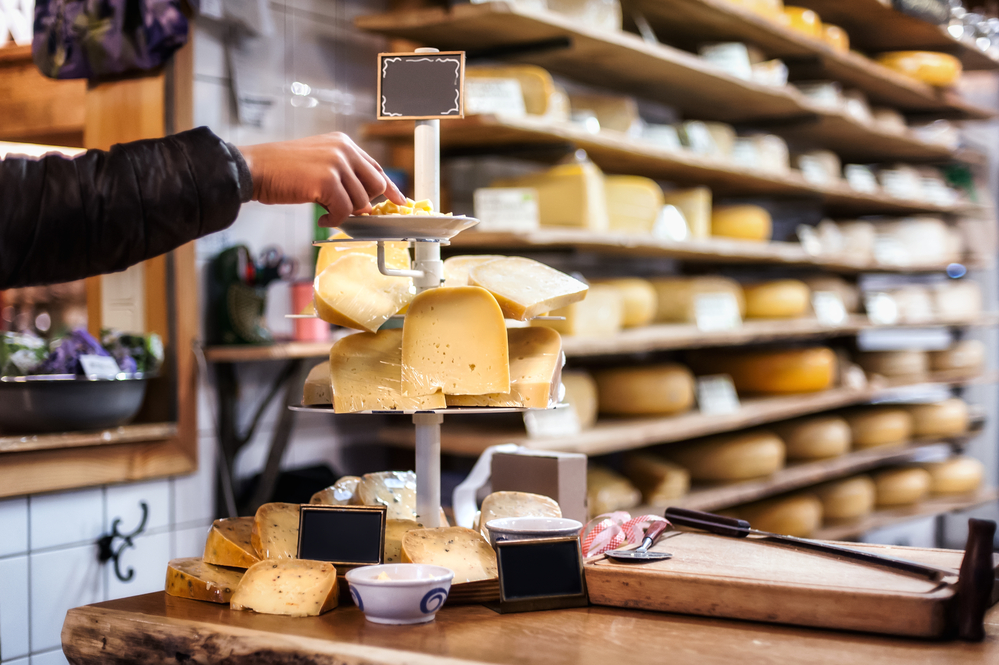
Some renditions of boerenkaas also have spices like cumin or other seeds, herbs, and spices that a farm might grow onsite. 🌿
Boerenkaas has different tastes and textures depending on how long it ages — from grassy, nutty notes, to a butterscotch sweetness and crunchiness from milk proteins, boerenkaas has a full range.
Similar to Edam, boerenkaas pairs well with full-bodied red wines or a classic Dutch beer — Dutch cheese for Dutch tastes. 🇳🇱
🛒 Where to buy: Cheese shops, farmer’s markets, some Dutch supermarkets (usually larger supermarket branches)
🥛 Pasteurised: Possible, can be made with unpasteurised milk
🧀 Texture: Semi-hard
⌚️ Aging time: Typically one to two years, but as short as six months up to seven years.
Leyden: the classic spiced cheese
Also called Leidse kaas, this semi-hard cheese historically comes from Leiden. Producers make it with Dutch cow’s milk and other herbs, usually cumin and caraway seeds.
These herbs give it a little extra spicy kick, so you can eat it in pretty small servings (although we won’t stop you if you want to eat more! 😁)
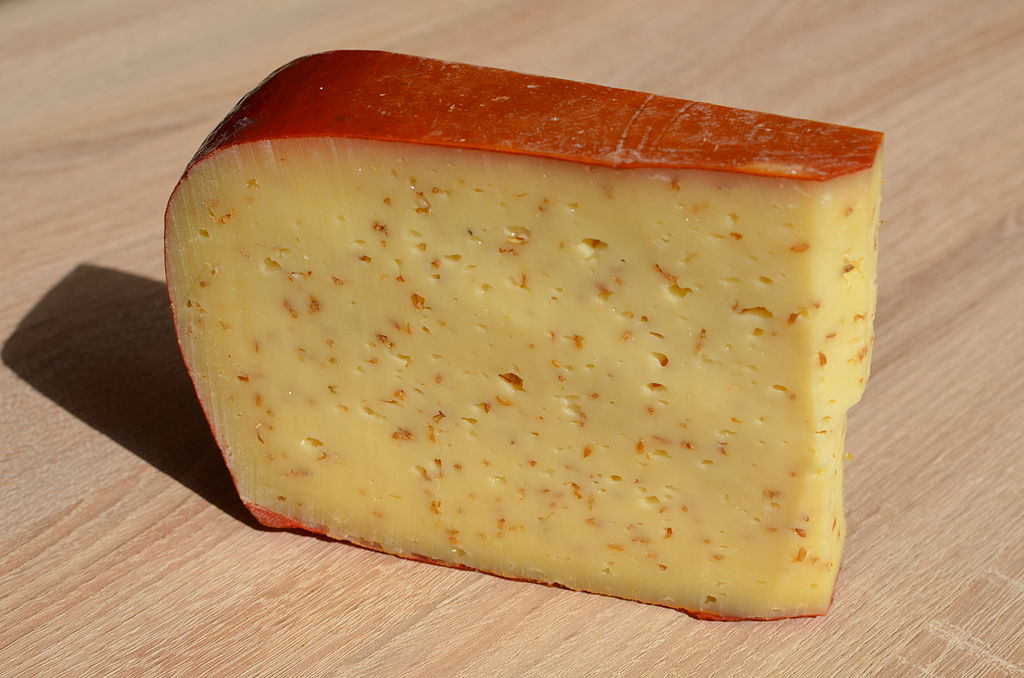
Leyden is the most common type of komijnekaas, which is cheese with cumin as an ingredient. It makes a delicious pairing with bread or beer if you’re looking for something to eat at a borrel. 😉
🛒 Where to buy: Cheese shops, farmer’s markets, particularly in Leiden
🥛 Pasteurised: Yes
🧀 Texture: Hard
⌚️ Aging time: Around two years
Nagelkaas: clove cheese from the Dutch islands
You have Frisian people to thank for this delicacy. They developed this somewhat rare Dutch cheese all the way in the islands all the way north of the Netherlands!
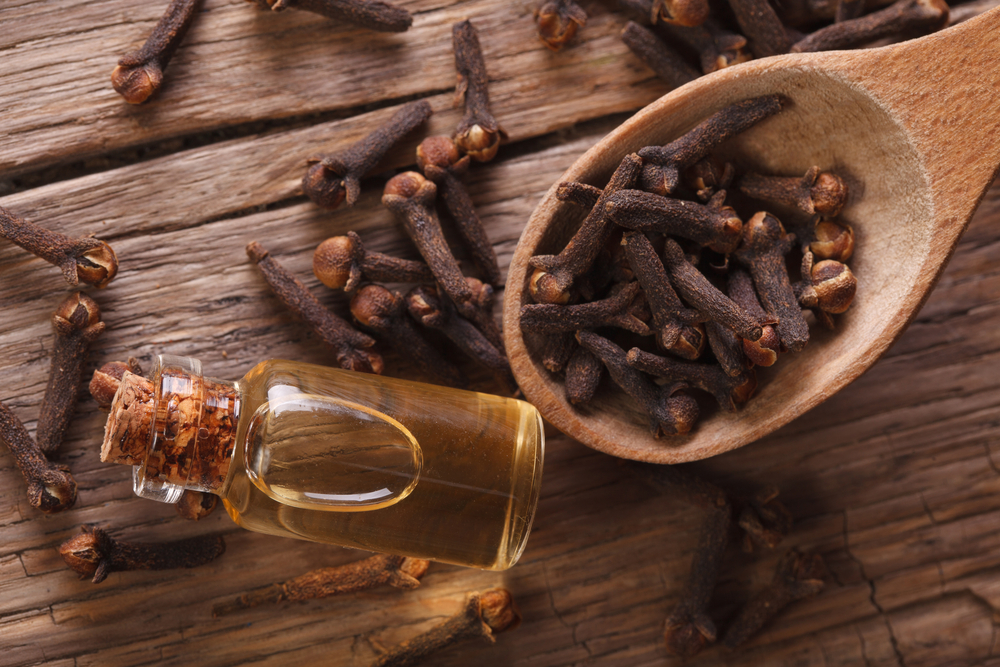
Nagelkaas translated to English, means “nail cheese” — and no, that doesn’t mean there are nails in it. This gouda-style cheese is made with skim pasteurised milk, cumin, and cloves that look like construction nails (still no real nails, we promise!), which is where this cheese variety gets its name.
This cheese is quite spicy (attributed to cloves and other spices), so a little slice on a cracker is enough to give you an idea of taste.
🛒 Where to buy: Cheese shops, farmer’s markets, some Dutch supermarkets (Albert Heijn, Jumbo)
🥛 Pasteurised: Yes, with skim milk
🧀 Texture: Firm, similar to Goudse kaas
⌚️ Aging time: Six months
Limburger: an unmistakable cheese
Limburger cheese gets its name from the Duchy of Limburg, which is a historical area that’s now part of Belgium. 😬 Yes, we know, scandalous.
But, that historical area also has parts in the Dutch province of Limburg. Of course, people still make the cheese in that area, so it’s considered Dutch cheese. The Germans and Belgians also make their own version of Limburger.
READ MORE | Provinces of the Netherlands: the easy guide
Why is this an ‘unmistakable’ Dutch cheese variety? Well, once you smell it, it’s a dead giveaway. Limburger cheese is made with a particular bacterium that gives it a very unique scent.
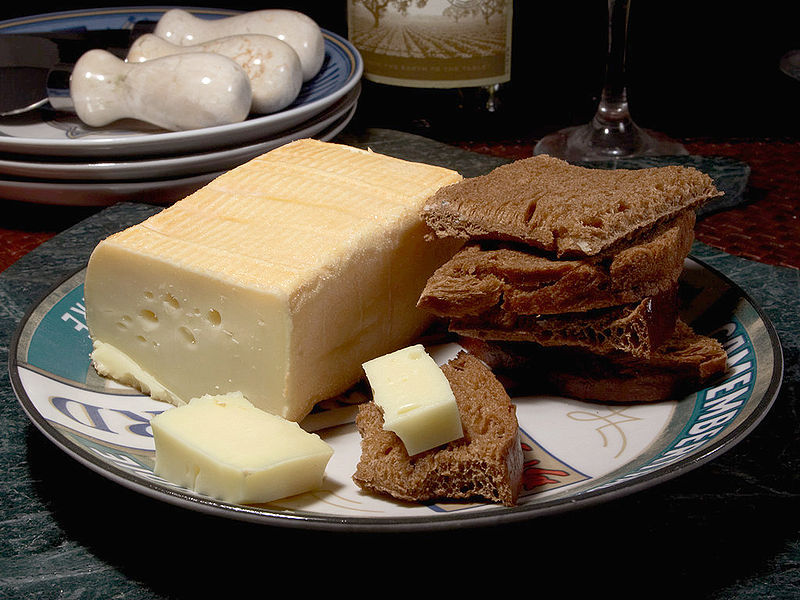
Once you remove Limburger from its rind, the flavour becomes quite mild. It has a spicy-sweet flavour combination, which goes well with fish, on crackers, and even a German or Belgian beer (we won’t tell!).
🛒 Where to buy: Cheese shops, some Dutch supermarkets (Albert Heijn), farmer’s markets
🥛 Pasteurised: Yes
🧀 Texture: Semi-soft
⌚️ Aging time: Two to three months
Parrano: the Dutch-Italian lovechild
Don’t let its looks or taste fool you, this fully Dutch cheese is similar to your typical Gouda. It’s a harder cheese with a mild, nutty taste.
But it also shares a similar taste, texture, and ageing method to Parmigiano Reggiano from Italy — not quite Italian but not quite Dutch either.
Parrano is best served as a garnish or cooking ingredient for your dish — so if you’re looking to give your food a little bit of a Dutch-Italian kick, Parrano cheese is a great option!
🛒 Where to buy: All Dutch supermarkets, cheese shops
🥛 Pasteurised: Yes
🧀 Texture: Semi-hard
⌚️ Aging time: Five months
Who knew there was so much to learn about when it came to Dutch cheese varieties? We hope you’ve learned just a little more about this delicacy. 😌
What’s your favourite Dutch cheese? Tell us in the comments below!

Love, love, love Leiden komijnekaas! Have only found it twice in the 24 years I now live in the US: once at the downtown market in Cleveland, OH and at a shop in Oakdale, CA who’s owner is Dutch and makes his own cheese. Now I live in Texas, but never seen it here
I live in Pennsylvania, and buy my Leidse Kaas (Komijnekaas) online at VanderVeen’s import in Wyoming. They are online: https://www.thedutchstore.com. They have a variety of Dutch cheeses.
For those over seas, try goudsekaasshop.nl
Has anyone heard of Ammerlander kaas? I have had it only once but would like purchase some. Thank you Annelies Strasser
I think you mean: Amelander ( one m) or maybe Amelandse. It’s a Dutch island and a local product. They do have a website https://www.kaasboerderijameland.nl/